Whether you admire the intricate designs, follow the cards as a divination tool, or think they’re just some made-up nonsense there’s no denying that tarot cards have a firm place in popular culture. These 78 cards have been featured time and again in films and books and are often associated with hacks in these modern stories. But, the history of these cards is rather interesting – whether you believe in divination or not.
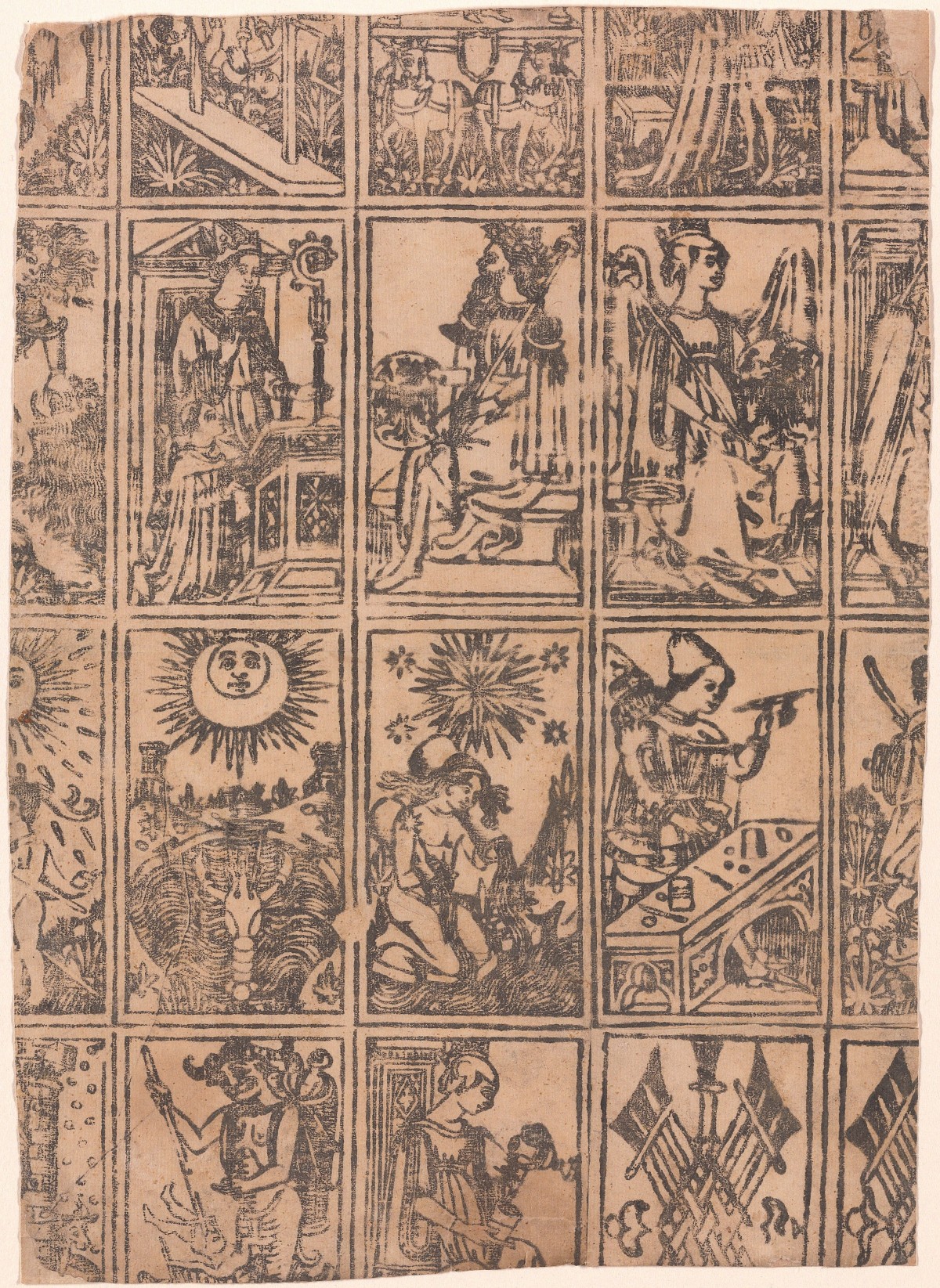
It is thought that the first tarot cards were created in Italy in the 15th century. From Italy the use of these cards traveled to France where the designs underwent changes such as labeling of the cards.
Back then printed books were only just beginning to take off after the invention of the Gutenberg printing press in 1440. It would be quite some time before books and art prints would become easily reproducible and inexpensive. Many of the most expensive early versions were either wood block prints or drawings which were then colored in by hand and sometimes even embellished with gold. As such anyone with a set of cards in the 1400s was most certainly well off.
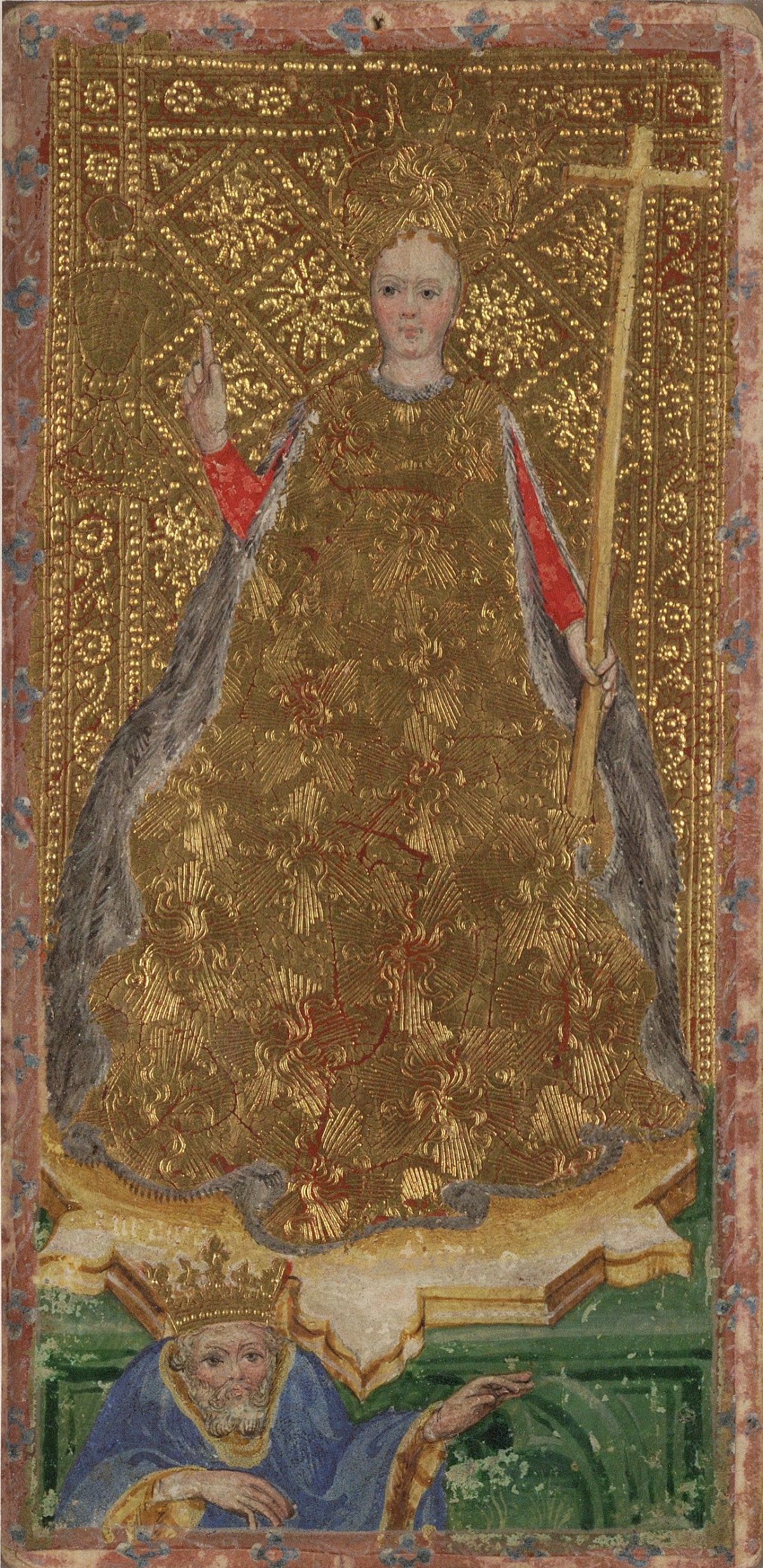
The exact origins of the cards are not known. Inventive, yet inaccurate, histories of the cards claimed they came from Gypsies of Egypt but this cannot be since this group originally comes from India- not Africa. What we do know is that by 1367 in Bern, Switzerland, there was a ban on the closely-related playing cards, owing to their associations with gambling and with the devil. There are some differences between the two styles of cards, but in reality the first tarot cards were not used so much for divination as they were for fun and games.
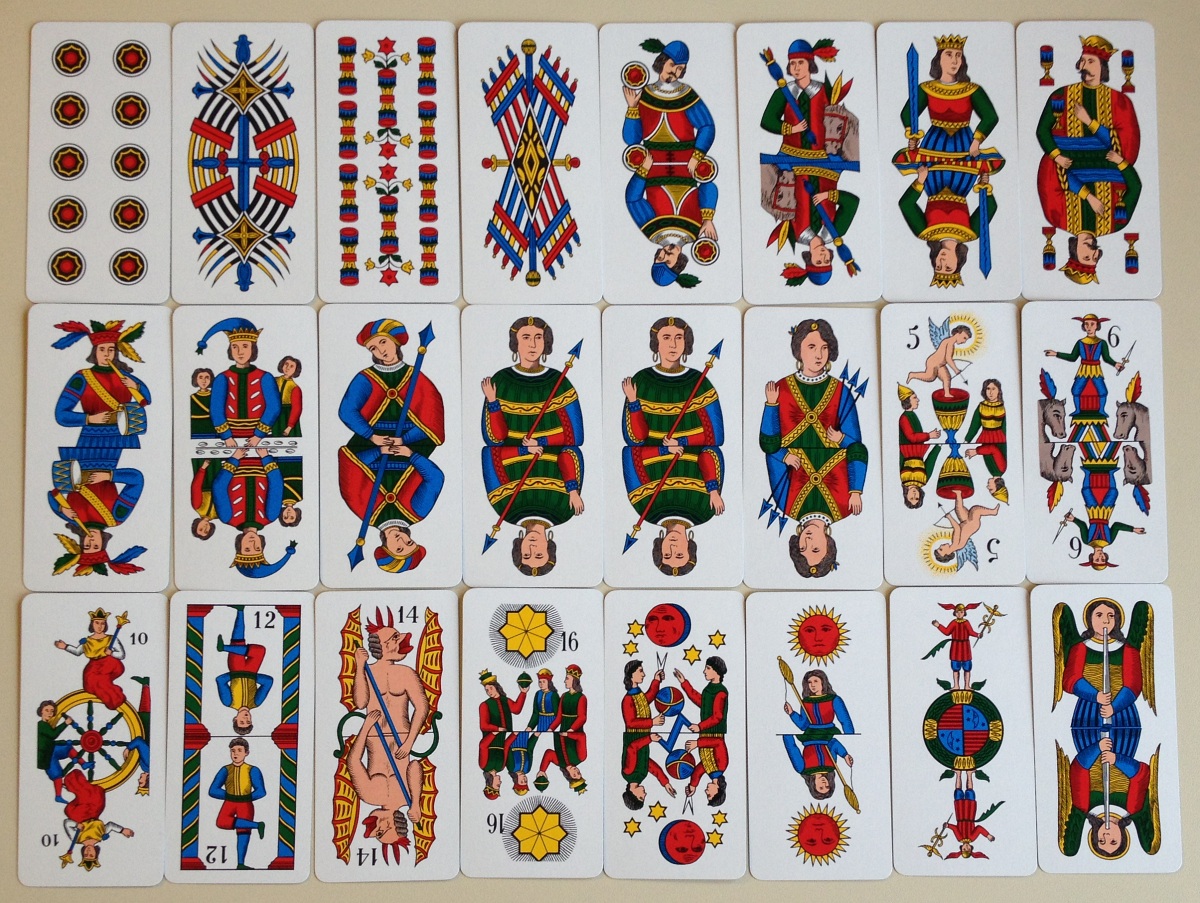
Open many tarot guide books and inside you will find a narrative of the fool or the mortal who journeys through life encountering fortune, loneliness, temptation, abundance, angst, and all the other experiences of human life. Today these stories and images are used to connect to our own trials and tribulations, but in Medieval and Renaissance Europe these cards were used for games which relied on this exact narrative.
By some accounts these games were sort of like a mashup of bridge and Dungeons and Dragons. Each card drawn added a new layer to the story. And, though the symbols to us today can seem quite esoteric, in the 15th century the stories depicted on the cards would have been much more relatable to current events and common knowledge. However, much of this symbolism is lost to us today, replaced instead by more modern interpretations of the symbology.
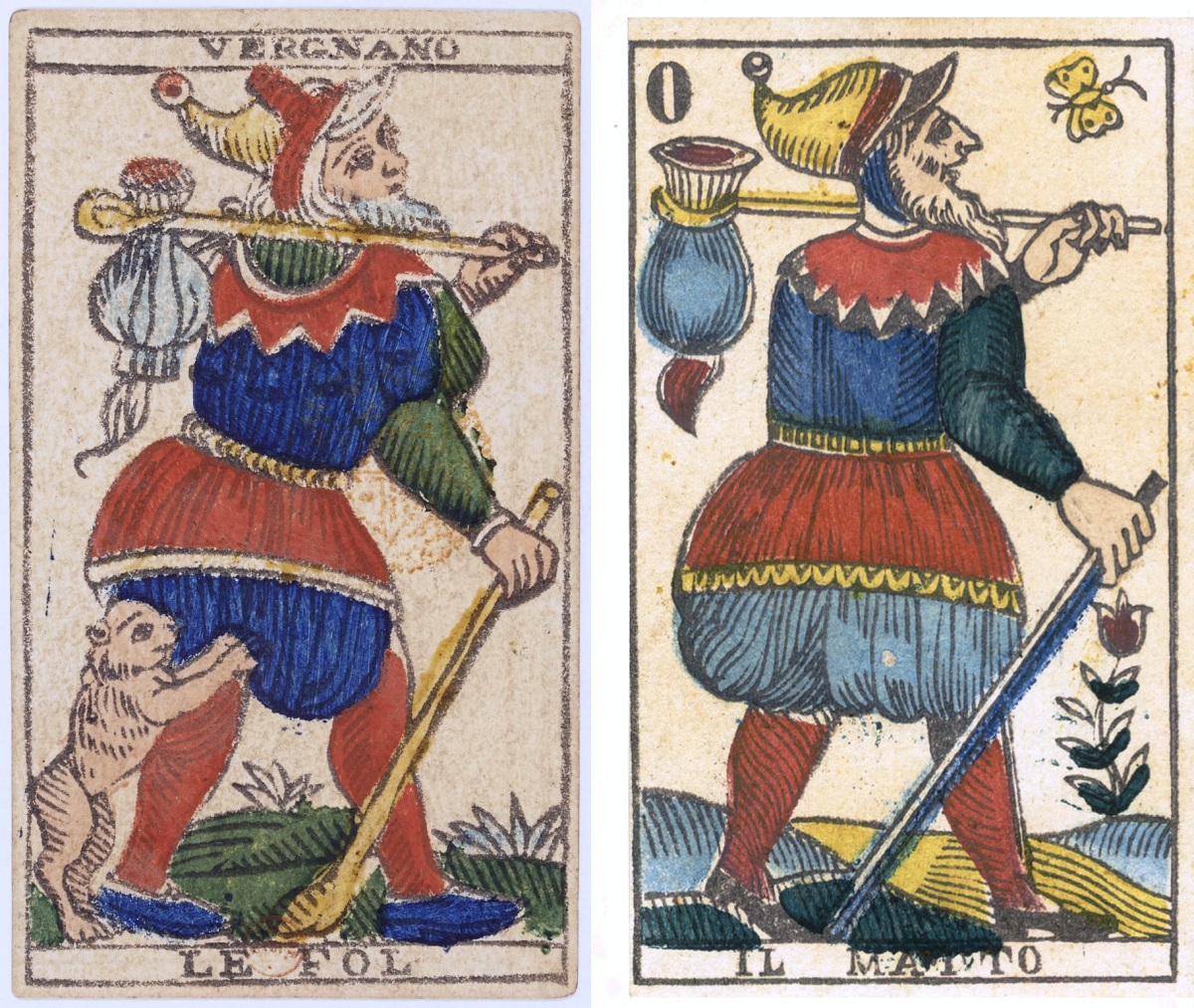
In parts of Italy and France tarot cards are still used to play proper card games. And, some 18th and 19th century decks were played by laying them all out and then rolling dice to see how close or far chance placed you in relation to a home card, not unlike our modern Candyland game.
But, in the rest of Europe these decks became associated more with divination and the art of cartomancy. There were no standard decks and thus interpretations could be vary based on who was reading which deck. However, by the mid 1400s there were 4 common suits in use: coins (or pentacles), batons (or wands), cups, and swords. Modern tarot decks still rely on these same suits.
The most common deck today is the Rider-Waite deck, first printed in 1909. This deck has not been out of production since then and features with it a pamphlet on how to interpret the imagery. The deck is named for the original publisher, William Rider, and the man behind the concept, A.E. Waite, though the deck was illustrated by Pamela Coleman Smith. It is also sometimes called the Waite-Rider-Smith deck.
Waite was one of many people in the late 19th and early 20th centuries who was captivated by spiritualism and mysticism. These movements sought to connect man to the spirit world and the realms of celestial fate via cards, séances, and rituals. Waite added some more mystical symbols and interpretations to the deck which are now common today.
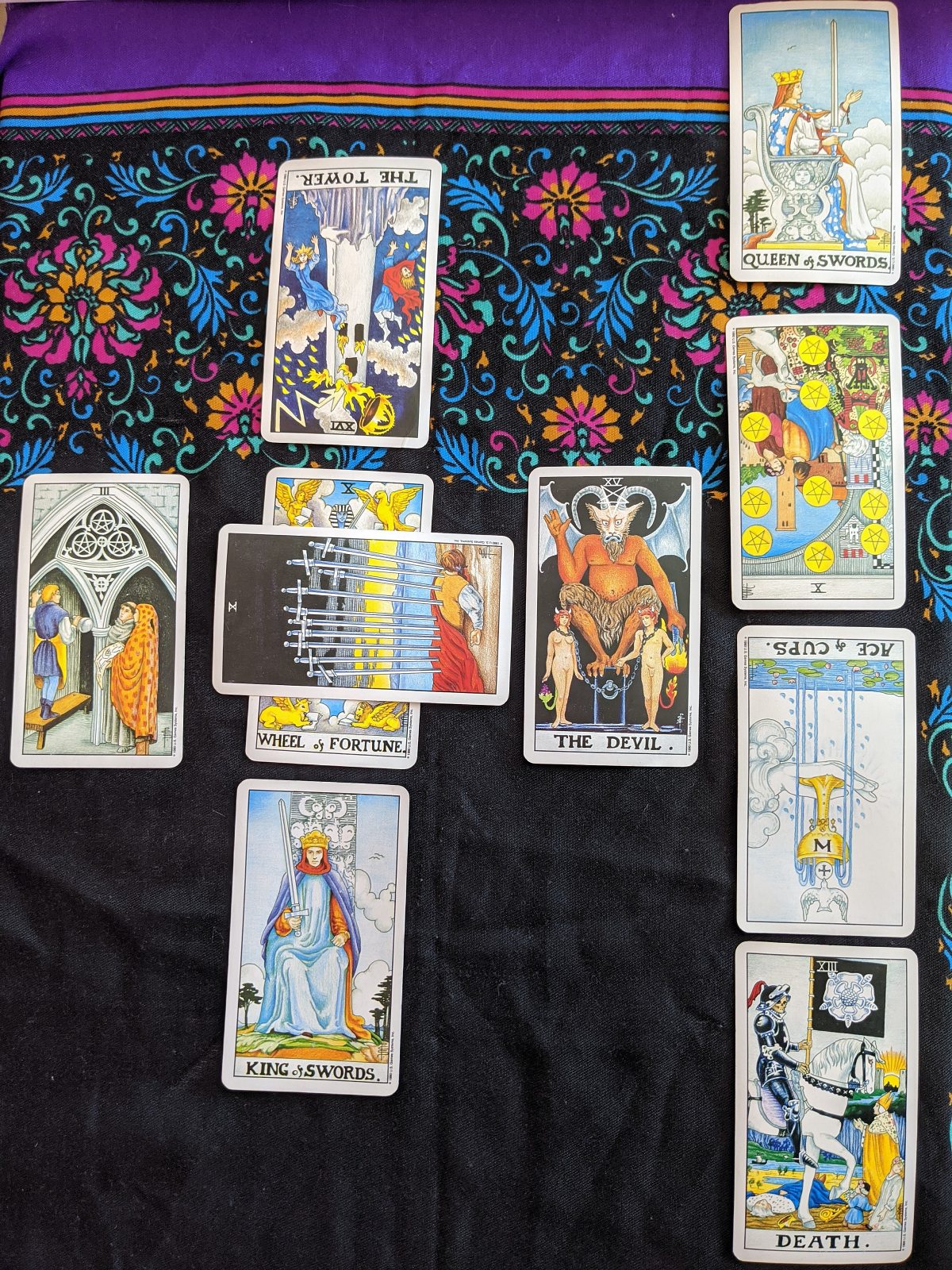
Today these mystical connotations remain, though many early decks do not owing to their fragile and ephemeral nature.
SKM: below-content placeholderWhizzco for DOT

